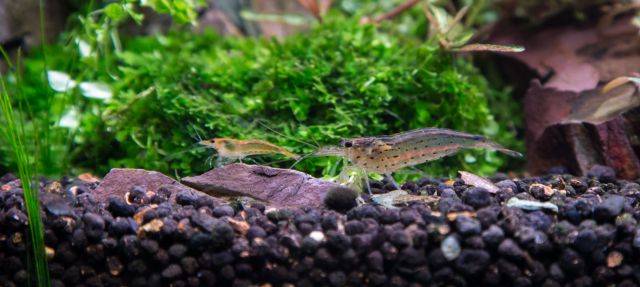In this video clip, Oliver Knott explains how to deal with algae in the aquarium. In addition, he gives numerous hints and tips on algae prevention, and he also presents measures on how to combat or remove algae.
First of all, we all should be aware that algae are a natural part of any aquatic biotope and therefore also of an aquarium. If there aren’t enough aquatic plants, they’ll take over important tasks as nutrient utilizers and oxygen suppliers. Of course, algal blooms are rather unsightly and more often than not they're a clear sign that the balance in the aquarium is off. Especially in planted aquariums, algae blooms are usually caused by imbalances in the nutrient supply,.
Preventing algal growth
Especially in planted aquariums or aquascapes, it is important to provide the aquatic plants with all the nutrients they need in order to compete successfully with algae. How you provide your plants with all they need is explained in our handy little guideline on "Fertilizing a planted tank, part 1". In any case, carbon fertilization via a CO2 system is crucial, as Oliver Knott describes in the video. In addition, nutrients should be supplied with a liquid fertilizer that provides trace elements like iron and macronutrients such as NPK - nitrate, phosphorus and potassium. The lighting should be adapted to the plants’ needs. Don't overdo it.
As importantly, don't neglect the necessary maintenance work in your aquarium, as algae will spread more in tanks that are somewhat irregularly cared for. Regular water changes as well as cleaning the glass at (short) intervals of about a week should be part of your standard maintenance routine.
Fighting algae

Above all, Oliver Knott relies on biological anti-algae measures by using algae-eaters. There are a variety of fish and especially of invertebrates such as shrimp and snails that feed on various algae. Especially when you have a new tank, you should introduce algae eaters as soon as possible and as soon as the water parameters allow. Especially in the so-called cycling phase of an aquarium, the ecosystem is still very unstable, and algal growth is quite common and could even be considered normal. If you want to know more, we recommend our article "Algae during the cycling phase".
Of course, there are other ways to specifically combat certain algae. To do this, it is important to first find out which species of algae you are dealing with in your aquarium. After that you can decide which measures - based on the type of algae - can best be taken. Apart from the biological control method with algae-eaters, other means are possible, like manual removal with the help of certain tools or the application of chemical algicides. Our article "Algae in the aquarium" is a good guide for algae identification. There you will find many more tips and tricks on how to successfully combat and remove algae.